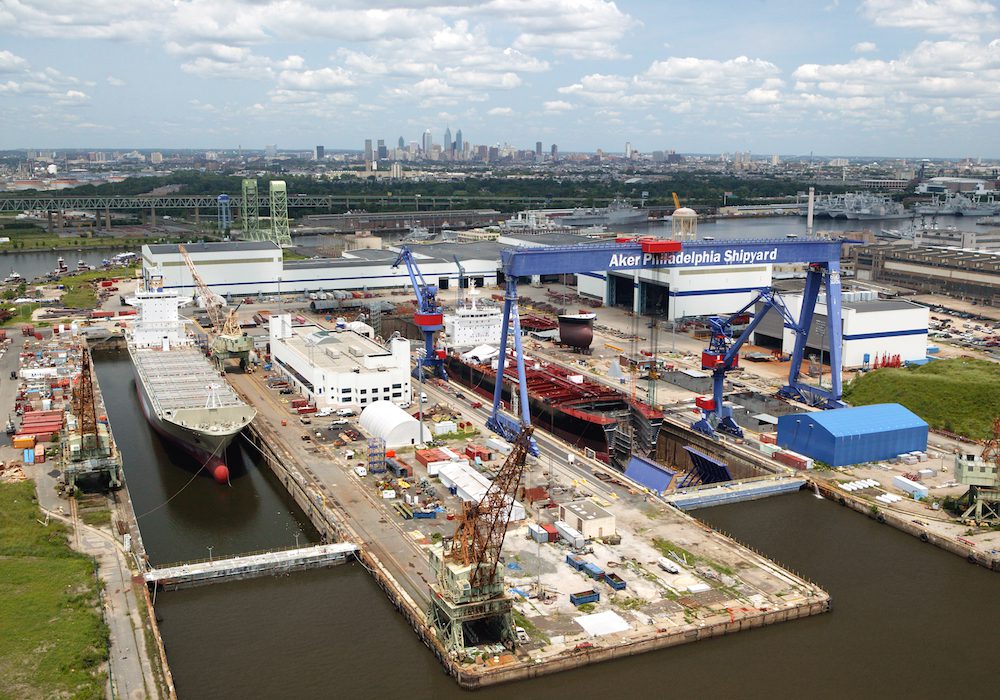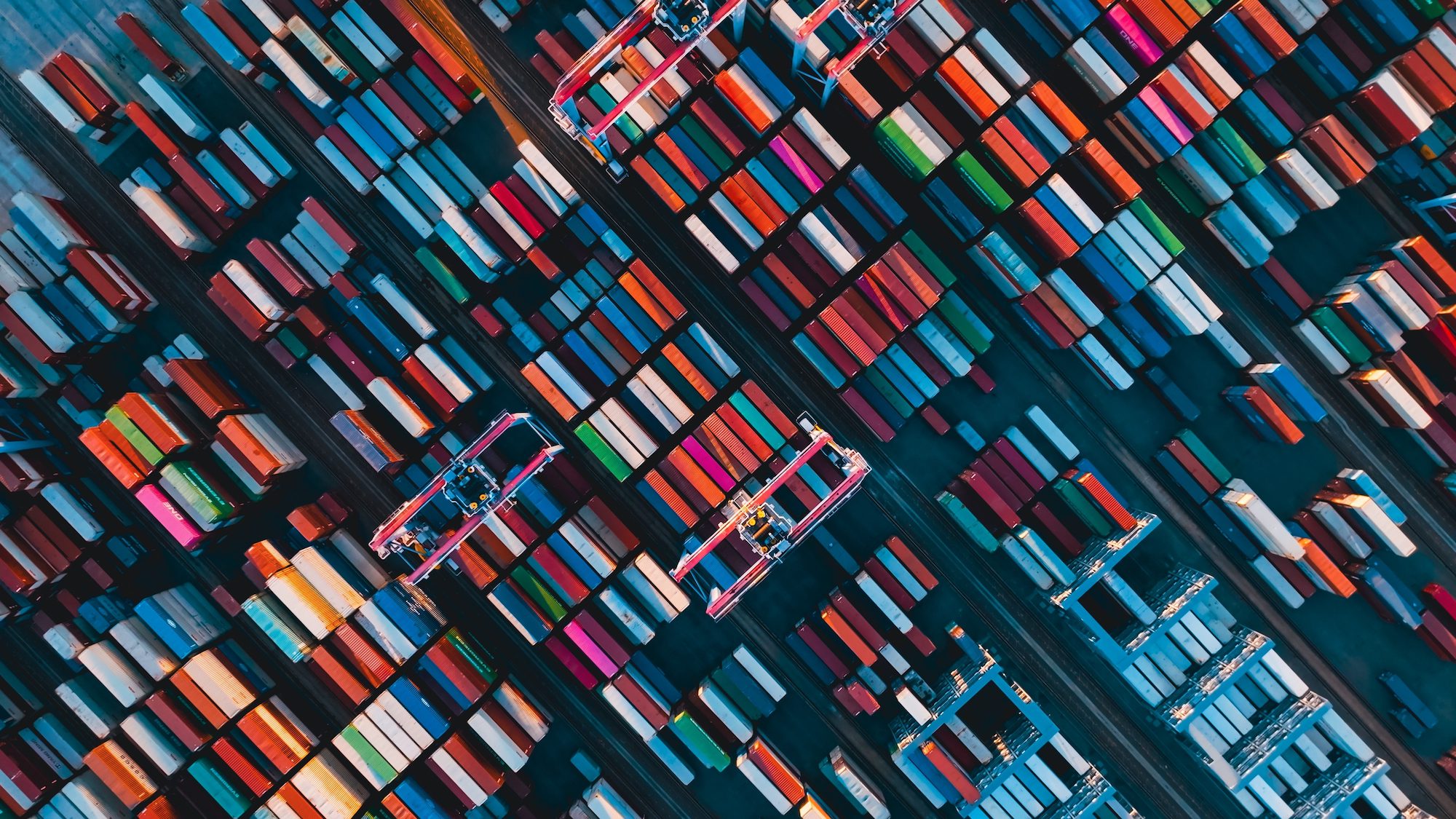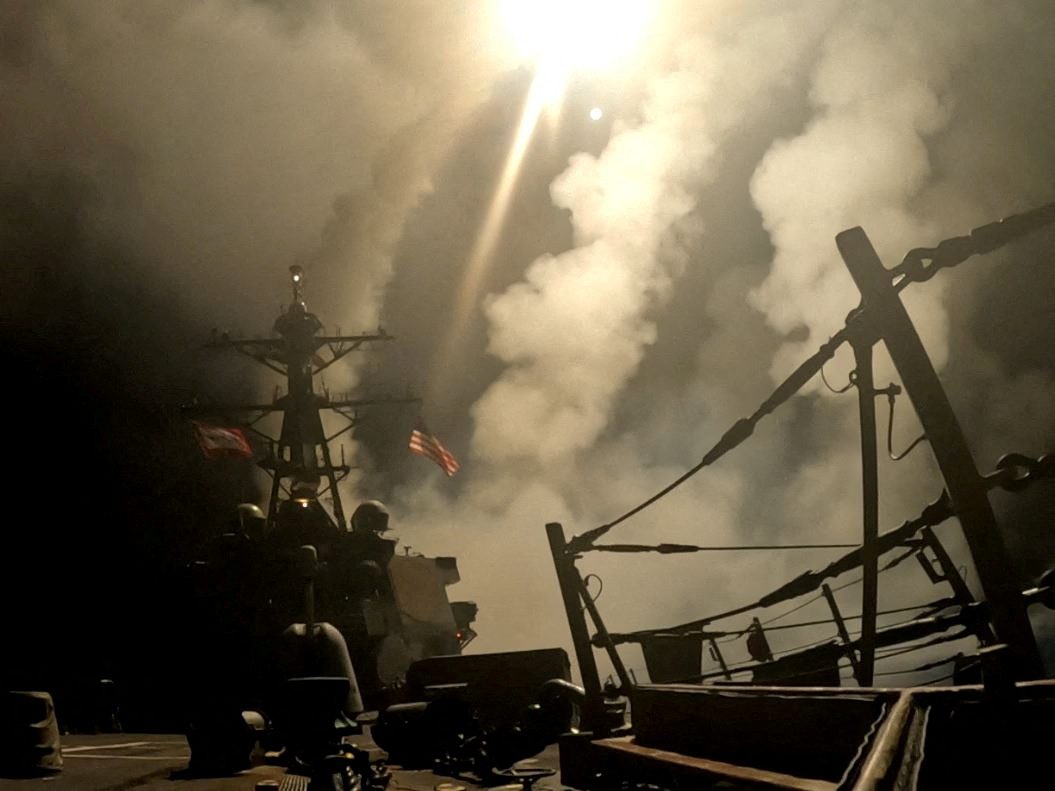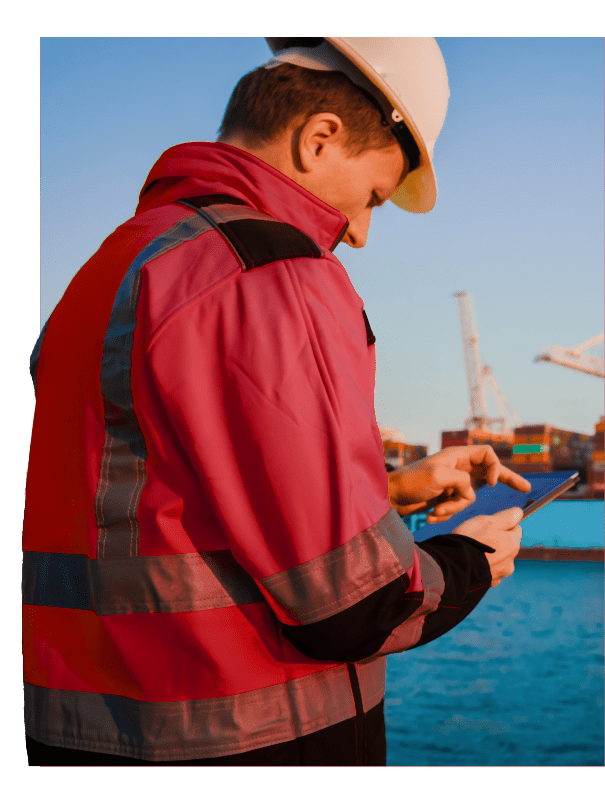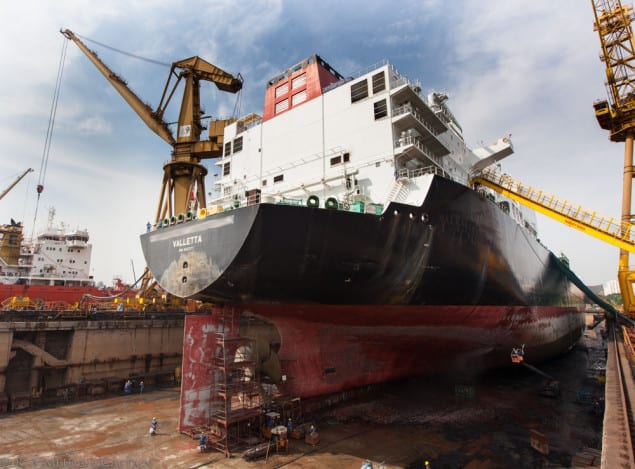
Last year I had the unique opportunity to tour Sembawang Shipyard on the northern coast of Singapore.
The last time I had been there was in 2001 and it was my first point of entry into Singapore while my ship, USS Paul F. Foster (DD 964), spent a few days having work done mid-deployment.

It was exciting to be back to see, with a bit more perspective on the industry, all the truly interesting work that is ongoing at this historic yard.
First and foremost, Sembawang shipyard is a capable repair yard for vessels of all shapes and sizes. This could include a complete refit, a drydocking for hull cleaning, painting or damage survey, a FPSO conversion, a ballast water treatment system install, life extension, class survey, or any number of other tasks that cannot be done at sea by the ship’s crew.
Built in the 1930s when Singapore was still under British control, Sembawang directly supported the Royal Navy and originally featured the King George VI graving dock which still operates with its original crane (pictured below). The graving dock measures 303 meters by 39.6 meters by 13.1 meters-deep.
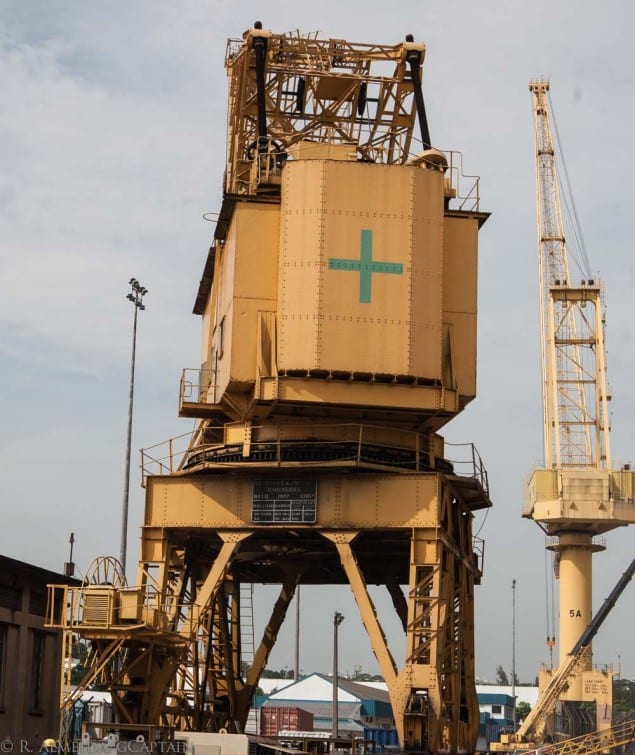
In 1975 however, an extra graving dock was brought into service which is large enough to handle vessels up to 400,000 tons deadweight, or in the case below, a modern LNG carrier.
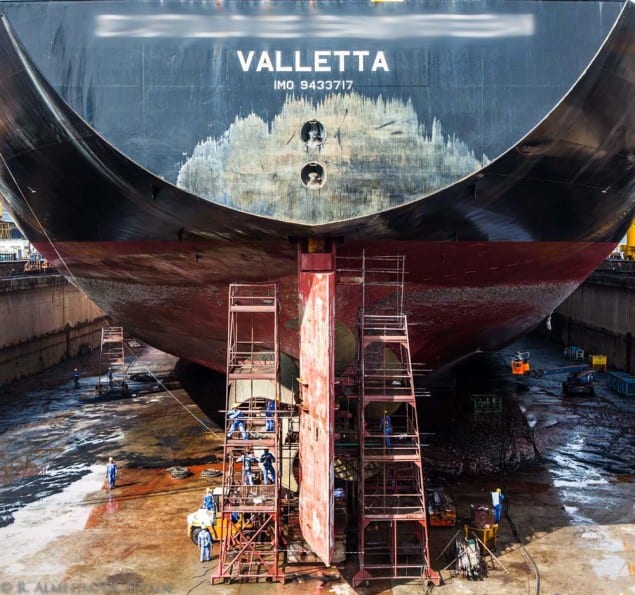
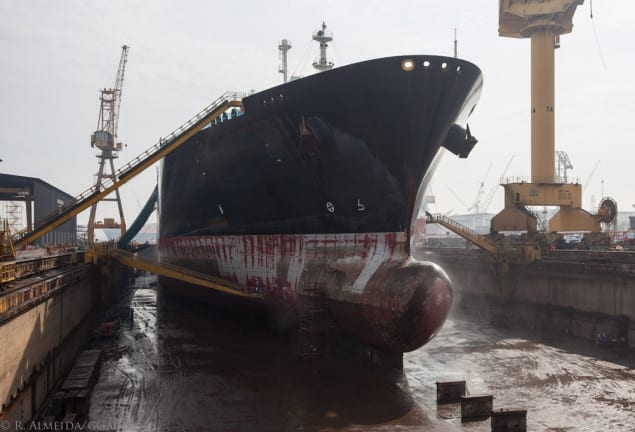
Above and below, hydraulic arms protrude from the sides of the graving dock to support hull cleaning and painting operations.
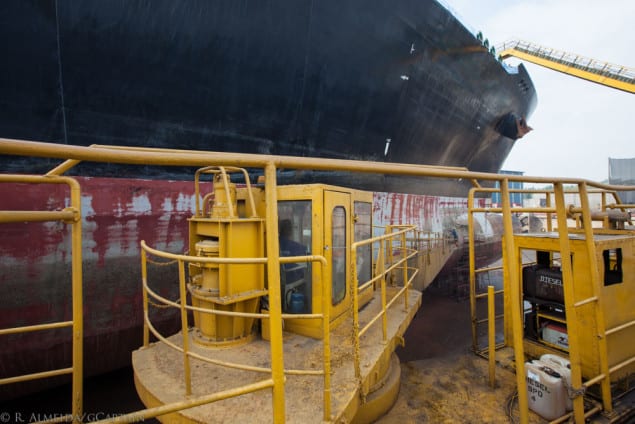
Strategically located with deep water access in the Strait of Malacca, Sembawang is one of the most popular repair facilities for operators of LNG carriers. During my visit, there were four such vessels at the yard, out of a total of 17 that were docked.
In the past, Sembawang avoided building new ships for one primary reason however… steel.

Former company Chairman, Lee Ek Tieng remarks in an interview published in the book Of Hearts & Minds – The Story of Sembawang Shipyard, “[in the 1980s] the Japanese and Korean shipbuilders were very big, and they had steel. Shipbuilding needs steel. You’ve got to buy steel from them. They can squeeze you out!”
For specialized new building, such as the 2012-built Seven Borealis, Sembawang makes the exception because in cases of these types of vessels, the main value of the ship does not lie in the steel of the vessel, but rather the engineering and expertise required to integrate the machinery and equipment.
“The risk for timely delivery, high quality, engineering content, equipment integration and safety requirements form a part of an Owner’s decision for choosing the right yard to build such vessels than just the steel price,” says Sembawang.
Below, a LNG carrier sits in Sembawang’s President floating drydock getting its hull cleaned.
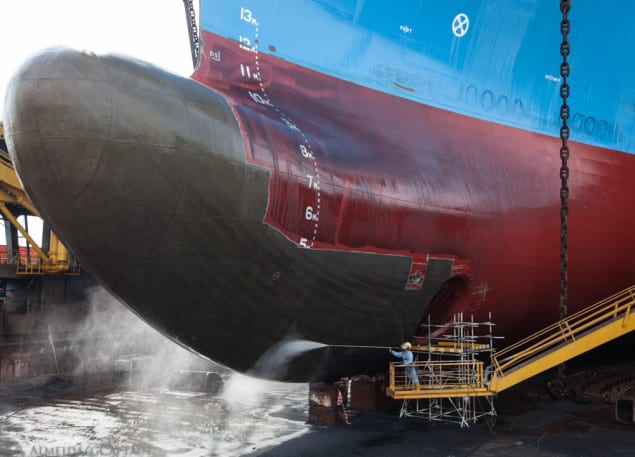
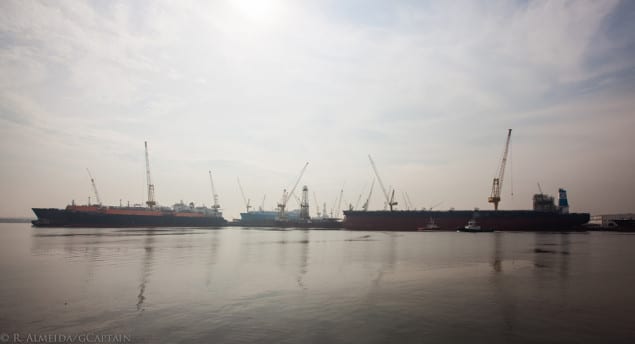
Above, a modern 315,000 ton deadweight VLCC (right) and her sister vessel (in the background and out of view) are being readied for conversion into turret-moored floating production storage and offloading (FPSO) vessels for Saipem. Both will be utilized offshore Angola for Total when the conversion is complete. Only her bridge wings had been removed.
Below, a semi-submersible drilling rig is moored next to the KFD floating dry dock.
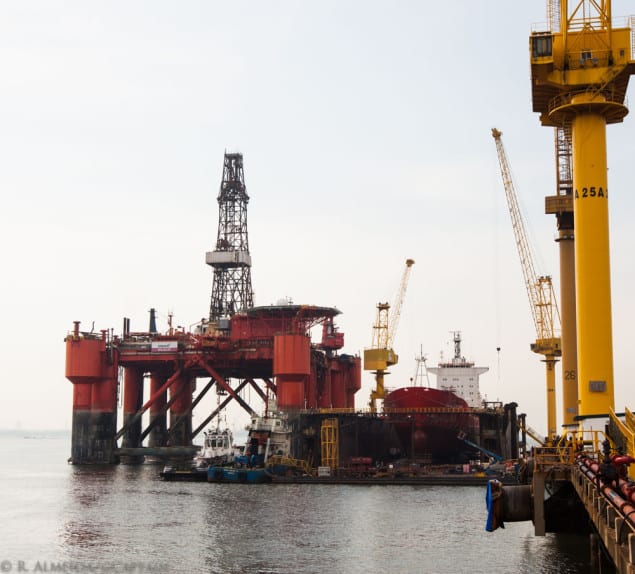
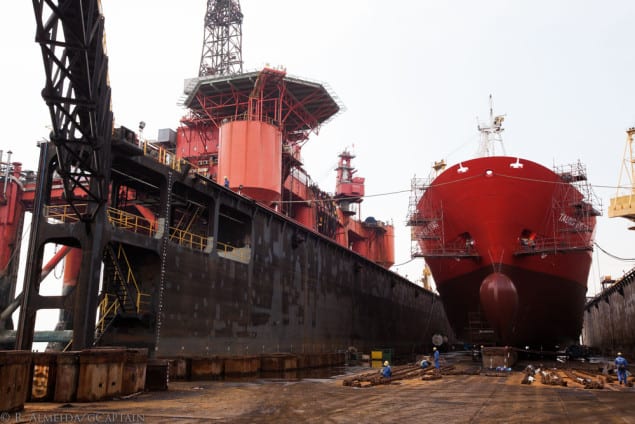
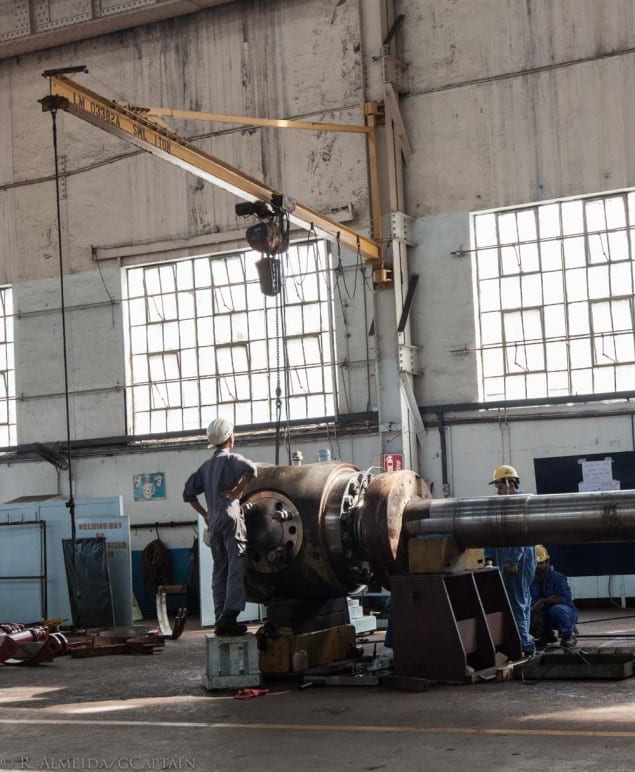
Above, workers inspect a controllable pitch propeller system.
Sembawang’s machine shops and many of the yards other facilities were upgraded in the 1970s and 80s in a $100 million upgrade project. Much of the equipment is still in use and going strong nearly 40 years later.
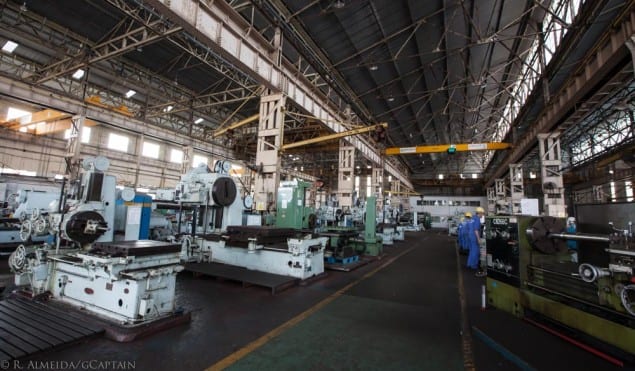
In Sembawang’s Premier graving dock, barnacles are being blasted off the hull of a LNG carrier.
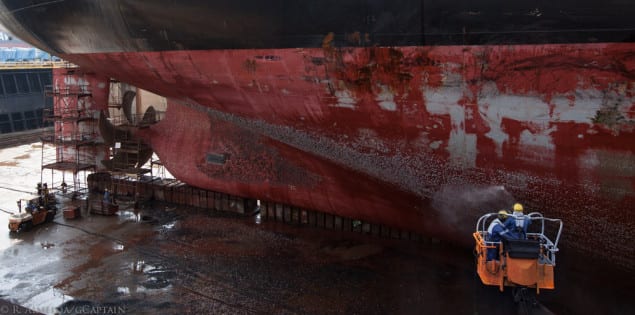
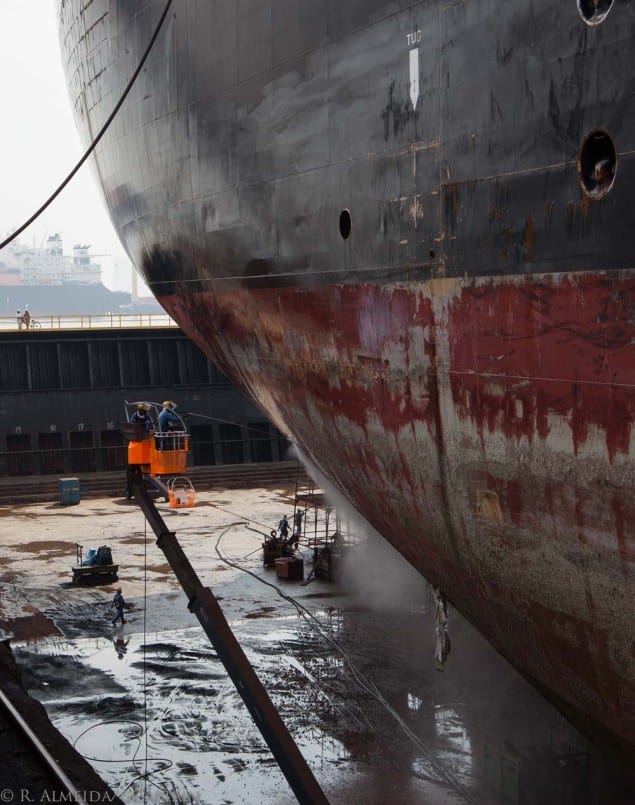
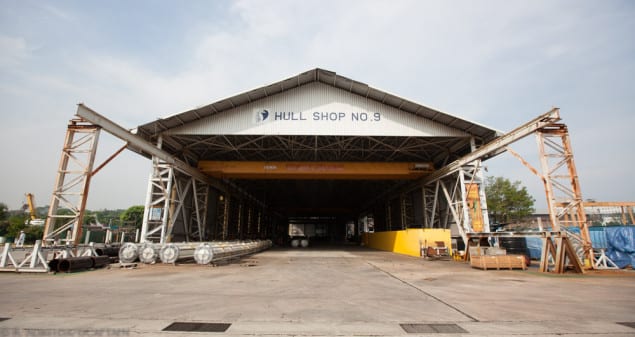
Above, drilling risers sit ready for overhaul at Hull Shop No. 9.
All images (c) R. Almeida/gCaptain.
Unlock Exclusive Insights Today!
Join the gCaptain Club for curated content, insider opinions, and vibrant community discussions.

 Join The Club
Join The Club



![Singapore’s Historic Sembawang Shipyard [Photos]](https://gcaptain.com/wp-content/uploads/2015/04/shareasimage-7.jpg)
















